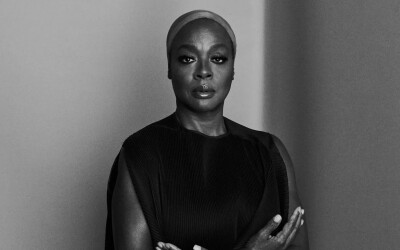The first African–American Congresswoman, Shirley Anita Chisholm represented a newly reapportioned U.S. House district centered in Brooklyn, New York. Elected in 1968 because of her roots in the Bedford–Stuyvesant neighborhood, Chisholm was catapulted into the national limelight by virtue of her race, gender, and outspoken personality. In 1972, in a largely symbolic undertaking, she campaigned for the Democratic presidential nomination. But “Fighting Shirley” Chisholm’s frontal assault on many congressional traditions and her reputation as a crusader limited her influence as a legislator. “I am the people’s politician,” she once told the New York Times. “If the day should ever come when the people can’t save me, I’ll know I’m finished. That’s when I’ll go back to being a professional educator.”
Shirley Anita St. Hill was born on November 30, 1924, in Brooklyn, New York. She was the oldest of four daughters of Charles St. Hill, a factory laborer from Guyana, and Ruby Seale St. Hill, a seamstress from Barbados. For part of her childhood, Shirley St. Hill lived in Barbados on her maternal grandparents’ farm, receiving a British education while her parents worked during the Great Depression to settle the family in Bedford–Stuyvesant. The most apparent manifestation of her West Indies roots was the slight, clipped British accent she retained throughout her life. She attended public schools in Brooklyn and graduated with high marks. Accepted to Vassar and Oberlin colleges, Shirley St. Hill attended Brooklyn College on scholarship and graduated cum laude with a B.A. in sociology in 1946. From 1946 to 1953, Chisholm worked as a nursery school teacher and then as the director of two daycare centers. She married Conrad Q. Chisholm, a private investigator, in 1949. Three years later, Shirley Chisholm earned an M.A. in early childhood education from Columbia University. She served as an educational consultant for New York City’s Division of Day Care from 1959 to 1964. In 1964, Chisholm was elected to the New York state legislature; she was the second African–American woman to serve in Albany.
A court–ordered redistricting that carved a new Brooklyn congressional district out of Chisholm’s Bedford–Stuyvesant neighborhood convinced her to run for Congress. The influential Democratic political machine, headed by Stanley Steingut, declared its intention to send an African American from the new district to the House. The endorsement of the machine usually resulted in a primary victory, which was tantamount to election in the heavily Democratic area. In the primary, Chisholm faced three African–American challengers: civil court judge Thomas R. Jones, a former district leader and New York assemblyman; Dolly Robinson, a former district co–leader; and William C. Thompson, a well–financed state senator. Chisholm roamed the new district in a sound truck that pulled up outside housing projects while she announced: “Ladies and Gentlemen … this is fighting Shirley Chisholm coming through.” Chisholm capitalized on her personal campaign style. “I have a way of talking that does something to people,” she noted. “I have a theory about campaigning. You have to let them feel you.” In the primary in mid–June 1968, Chisholm defeated Thompson, her nearest competitor, by about 800 votes in an election characterized by light voter turnout.



